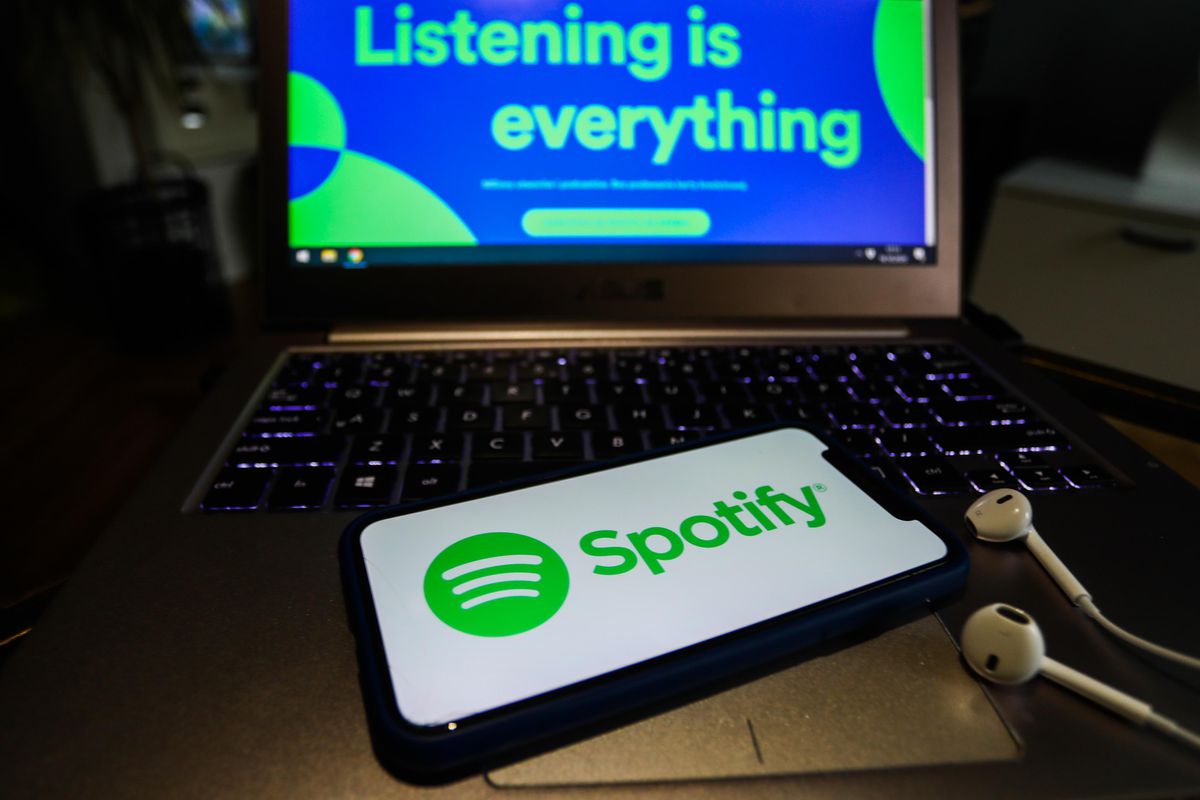[ad_1]

(Photo Illustration by Jakub Porzycki/NurPhoto via Getty Images)
This week Spotify posted what amounts to a justification of its royalty payouts called “Loud&Clear.” The idea behind it is to show that there are some artists that make a great deal of money from the platform, but there are also thousands of smaller artists that are making at least some money as well. There are no specific artists cited, but the generalities of the data are telling.
First of all, Spotify can’t really tell you what Drake or Taylor Swift are netting from the platform because they really don’t know. Remember that any royalty revenue goes directly to the copyright holder, which in most cases is the record label. The payout to the artist is then subject to the deal that the artist has with label, which Spotify (or any other streaming platform for that matter) isn’t privy to.
It’s In The Data
That said, there are some pretty good stats that can be gleaned from the site. For instance:
- The platform has paid out over $23 billion in royalties to rights holders as of 2020. That includes over $5 billion just in 2020.
- 184,500 artists generated over $1,000 in royalties in 2020.
- 13,400 artists generated over $50,000 in 2020.
- 7,800 artists generated over $100,000 in 2020.
- 870 artists generated over $1,000,000 in 2020.
- Over 100 songs have reached a billion streams.
- 207,000 songs had more than 1 million streams in 2020.
- 551,000 have over a million streams in total.
- 2,710,000 have over 100,000 streams in total.
Now the key to the royalty numbers above is the word “generated,” since Spotify doesn’t do direct payouts to artists. It’s always through a third party like a record label or aggregator like Tunecore. Regardless of the language, the point is that there’s some real money being generated on the platform for a good number of artists. If 13,000 of them can make a decent middle-class living just from a single platform, it goes without saying that they’re probably making a lot more when the performance on other platforms is taken into account. Spotify has about a third of the streaming marketshare so it’s conceivable that these artist’s income is substantially higher as a result.
Is This Good Or Not?
All this flies into the face of many older artists (David Crosby comes to mind) who can’t get their arms around the concept of streaming. They feel that since the average payout per stream is relatively low (around about $0.004 per stream for Spotify), that the streaming platforms are somehow stealing from them. Did it ever occur to them that maybe they’re just not that popular anymore? Major success at one point of your life doesn’t necessarily guarantee that it will always be that way, and in fact history has shown that to be the case most of the time. Streaming numbers just reflect what’s hot and popular right now.
For instance, Loud&Clear breaks down artists into categories of popularity. At the top is what they call Chart Toppers. These are the top 500 artists in terms of listener numbers in 2020. They had 17.3 million average listeners per month and generated $3.7 million during the year. On the other hand Heritage artists are those that have tasted success over a couple of decades. They had at least 500,000 monthly listeners and 80% of the streams were from songs that were more than 5 years old. They averaged 2.7 monthly listeners and generated $407,000 in royalties.
Dropping down a step, the Established artist classification means that you were somewhere in the top 50,000 in listener numbers but not in the top 500. There were 34,000 of these artists and they averaged over 600,000 listeners per month. They generated an average of $94,000 last year. Once again, “generated” is the key word here, as it doesn’t represent what the artist actually put in her pocket.
Not All Streams Are Equal
The fact of the matter is that streaming royalty generation is a complex calculation because it has to be. Two artists with the exact same number of streams will show different earnings because of a variety of factors, including the tier most of the streams came from (free or subscription), the country the streams came from (different subscription fees), and the total number of streams in a given market. Then the label and publisher deals means that whatever figures the streaming platform has paid out can be substantially less by the time the artist sees any.
Regardless of what the naysayers continue to claim, streaming has been good for the music business and may eventually send it to unimagined heights in the future. Even though its growth seems to be leveling off a bit, it’s still doing better than many every thought it could.
[ad_2]
